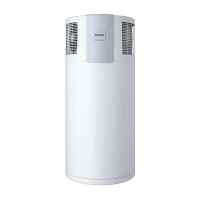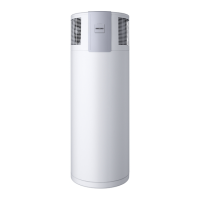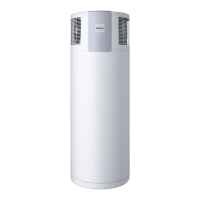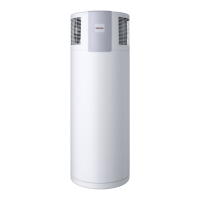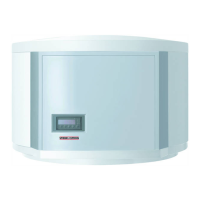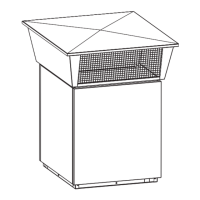OPERATION
Settings
10 | WWK 223-303 electronic www.stiebel-eltron.com
Operation with external signal transmitter
!
Material losses
See "Permissible voltage range for external signal trans-
mitters" in the "Specification/data table" chapter.
As standard, the appliances feature the ability to assign a spe-
cific, individual set DHW temperature ("set temperature2") to a
connected external signal transmitter, such as a PV system or a
low tariff transmitter.
This set temperature 2 is activated if the terminal connected to
the external signal transmitter receives a signal (see "Electrical
connection/external signal transmitter connection option" chap-
ter). While activated, set temperature2 replaces the standard set
DHW temperature (set temperature1).
If set temperature2 is activated by the external signal transmitter,
this set temperature will then be active for at least 20minutes.
If the external signal remains active after the 20minutes have
passed, the compressor will run until the external signal drops
out or set temperature2 is reached. Afterwards, the selected set
temperature1 is activated again.
When the relevant DHW set temperature has been reached, the
compressor switches off and remains off for a minimum idle time
of 20minutes.
The following diagram illustrates the connections by means of a
sample signal sequence from an external signal transmitter.
Example:
Water temperature °C 55
Set temperature 1 °C 50
Set temperature 2 °C 65
1
0
0 5 10 15 20 25 30 35 40 45 50 55 60 65 70 75 t [min]
B
1
1
0 2
0 5 10 15 20 25 30 35 40 45 50 55 60 65 70 75 t [min]
D0000034613
A External signal
B Compressor
1 20 min. minimum runtime, set temperature2
2 20 min. minimum compressor idle time
Note
An external signal must be present for at least 60sec-
onds before the control unit responds to it. This will for
example prevent a brief burst of sunshine from triggering
a heat-up process, which due to a lack of further insola-
tion can then not be supplied with PV power generated
on site.
Fan speed
The current set fan output appears, iden-
tified by a preceding F.
Note
This parameter cannot be changed on this appliance.
"Air intake temperature" display
An "A" appears as the intake temperature
symbol.
The current air intake temperature is
displayed.
The air intake temperature is only dis-
played while the appliance fan is run-
ning. If it is not possible to establish an
air intake temperature, two dashes are
shown.
Enabilng the "runtime-dependent rapid heat-up" function
Note
Only use runtime-dependent rapid heat-up if necessary
and only at low intake temperatures. Avoid using runt-
ime-dependent rapid heat-up at intake temperatures for
which heating without the electric emergency/booster
heater normally covers the prevailing demand. In such
cases, selecting too short a runtime leads to unnecessary
electricity bills.
To prevent excessive power consumption, disable the
function in summer and in spring/autumn if at all pos-
sible.
For improved comfort, the appliance offers runtime-dependent
rapid heat-up. If the selected set temperature is not reached by the
heat pump after a user-defined period, the appliance switches on
the electric emergency/booster heater in parallel to back up the
heat pump (subject to this function being enabled). Once the set
value has been reached, the electric emergency/booster heater
remains inactive until the set time has elapsed again following a
heat demand. As a factory default, this function is disabled.
In the case of outdoor installation, we recommend activating the
"runtime-dependent rapid heat-up" function during the winter
months and as required in spring/autumn when outside temper-
atures are low. This prevents any loss of comfort if, for example,
the heat pump heating output falls as a result of the outside tem-
perature dropping, and the heat-up time is therefore longer.
The period after which the electric emergency/booster heater
provides automatic back-up needs to be selected individually by
the user based on local conditions. DHW consumption and the
expected intake temperatures need to be considered.
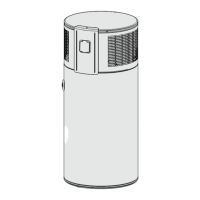
